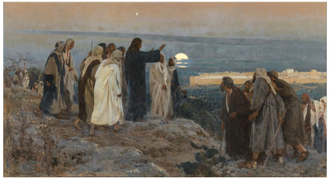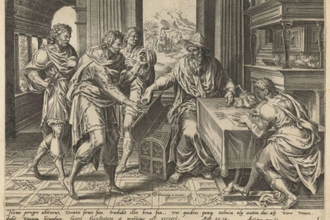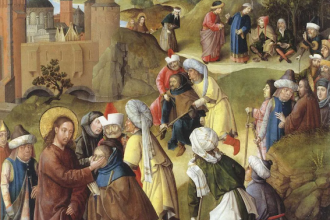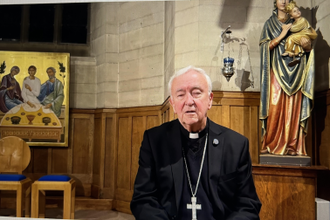Gospel in Art: When Jesus saw the city of Jerusalem, he wept over it

Flevit super illam (Then He Wept), by Enrique Simonet, 1892 © Prado Museum, Madrid
Source: Christian Art
Gospel of 20 November 2025
Luke 19:41-44
At that time: When Jesus drew near and saw the city of Jerusalem, he wept over it, saying, 'Would that you, even you, had known on this day the things that make for peace! But now they are hidden from your eyes. For the days will come upon you, when your enemies will set up a barricade round you, and surround you and hem you in on every side, and tear you down to the ground, you and your children within you. And they will not leave one stone upon another in you, because you did not know the time of your visitation.'
Reflection on the painting
It has been said that to love someone is to risk having one's heart broken. Or we say things along the lines of "Love always costs something; if it costs you nothing, it is not love." Or CS Lewis's wrote: "To love at all is to be vulnerable." or Euripides said "The greater the love, the greater the sorrow when it is lost." It is true, when we love, we may get hurt. When those we love suffer or die, our hearts break, and our tears become the visible sign of that breaking. In today's Gospel, we see Jesus weeping over the city of Jerusalem. His tears are not of frustration or anger, but of love; the love of one who longs for his people to find peace. He desired only what was best for them, as true love always does. Yet he foresaw that their rejection of his message. Their refusal to listen to the voice of God spoken through him, would ultimately lead to destruction and sorrow.
The Lord still weeps today. He weeps whenever those whom he loves (which is everyone!) turn away from the path that leads to peace. His love is constant, yet he will never force our hearts. All he can do is weep when we reject the grace he offers. And yet, just as he weeps through our compassion, he also rejoices through our goodness. Whenever we grieve for the pain of our world - for violence, injustice, or hatred - it is Christ's own heart that moves within us. But whenever we bring light where there is darkness, mercy where there is bitterness, and love where there is fear, the Lord rejoices in us. For then, if we are close to God, our hearts move and beat the way God's hearts moves and beats.
Today's canvas is huge. This monumental work Flevit super illam, 1892, measures 304 x 555 cm. The artist Enrique Simonet places Christ on the Mount of Olives, gazing across the valley at Jerusalem and weeping over the city in sorrow and compassion. Behind him the Temple stands faintly in the twilight, disciples and onlookers surround him, and the soft luminous sky reflects the coming destruction he foretells. The Spanish painter Enrique Simonet Lombardo was born in Valencia, initially trained in ecclesiastical studies before devoting himself to art; he studied at the Royal Academy of Fine Arts of San Carlos and later in Rome, travelled to the Holy Land to document biblical scenery, and achieved international acclaim for his masterful, realist canvases.
LINKS
Gospel in Art: https://christian.art/
Today's Reflection: https://christian.art/daily-gospel-reading/luke-19-41-44-2025/
and
Video: The Art of Remembrance - From The Monuments Men to The Last Post: www.indcatholicnews.com/news/53644


















